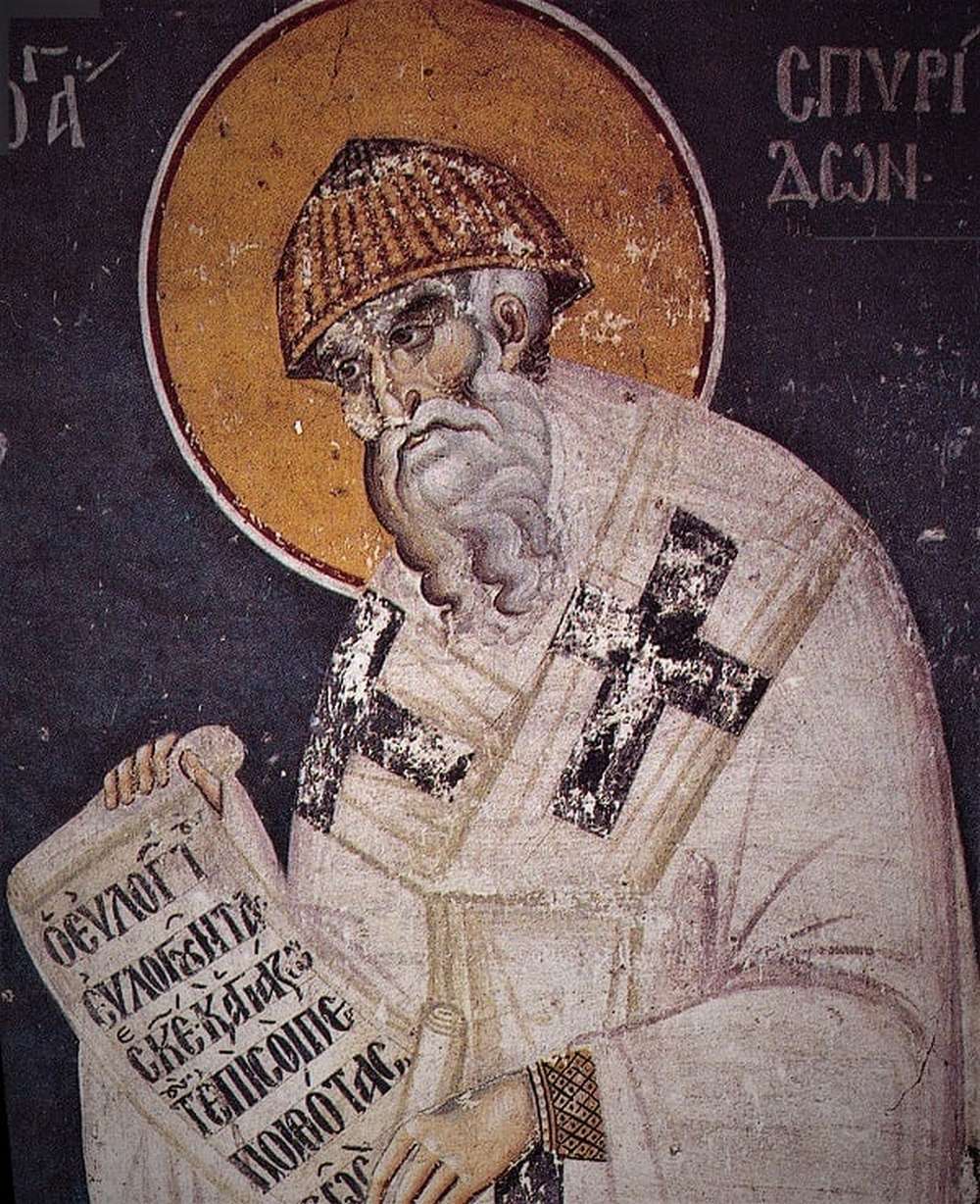
Saint Spyridon, a revered figure in Catholicism and Orthodoxy, lived during the 3rd and 4th centuries, with his life spanning a period marked by profound theological and ecclesiastical developments. Born circa 270 AD and passing away in 348 AD, he is celebrated for his devout faith and miraculous works. His journey from a humble shepherd to a venerated bishop and saint encapsulates a remarkable spiritual odyssey, leaving an indelible impact on Christian history and tradition.
Early Life and Path to Sainthood
Saint Spyridon’s early life, shrouded in the simplicity of a shepherd’s existence, laid the foundation for his later spiritual endeavors. Born in the village of Askia, on the island of Cyprus, his early years were marked by a profound connection with nature and a deep-seated piety. His journey from this pastoral life to sainthood began with an unwavering commitment to Christian values, a commitment that would define his entire life.
Despite his lack of formal education, Spyridon’s innate wisdom and deep understanding of Christian teachings gained him respect among his peers. His marriage and subsequent family life further grounded him in the Christian virtues of love and compassion, virtues that would become hallmarks of his later ministry. After the untimely death of his wife, Spyridon’s life took a decisive turn towards religious devotion, culminating in his ordination as a bishop.
His tenure as a bishop was marked by a unique blend of simplicity and profound spiritual insight. Renowned for his miraculous abilities, he became a symbol of hope and divine intervention for the faithful. His most notable miracle, turning a serpent into gold and then to dust, showcased his deep faith and connection to the divine, further solidifying his status as a revered Saint.
Theological Contributions and the Council of Nicaea
Saint Spyridon’s theological contributions, particularly during the First Council of Nicaea in 325 AD, played a pivotal role in shaping Orthodox Christian doctrine. His participation in this seminal event, convened by Emperor Constantine, was crucial in addressing the Arian controversy, which challenged the divinity of Jesus Christ.
Spyridon’s approach to theological discourse was characterized by simplicity yet profound wisdom. His famous incident at the Council, where he illustrated the Holy Trinity’s mystery using a potsherd, exemplified his ability to convey complex theological concepts through simple, relatable metaphors. This act not only demonstrated his deep understanding of Christian doctrine but also helped to bridge the gap between complex theological debates and the common believer’s understanding.
His staunch defense of the Nicene Creed, which affirmed the consubstantiality of the Father and the Son, was instrumental in countering the Arian heresy. Spyridon’s contributions to the Council of Nicaea were not only a testament to his theological acumen but also a reflection of his unwavering commitment to upholding Christian teachings. His legacy in this regard remains a cornerstone of the Christian theology, underscoring the enduring impact of his life and works on the Christian faith.
Miracles and Popular Devotin
Saint Spyridon’s life was marked by numerous miracles, which played a significant role in the growth of his popular devotion. His miraculous feats, transcending the ordinary bounds of nature, drew people from far and wide, seeking his intercession and blessings. Among these, the most famous was his ability to ignite a dry wick by merely praying, a testament to his profound faith and divine connection.
These miracles were not mere displays of supernatural power but acts deeply rooted in compassion and empathy. Whether it was healing the sick, providing for the needy, or calming storms, each miracle reflected his commitment to serving God’s creation. This compassionate aspect of his miracles significantly contributed to his veneration as a saint, resonating deeply with the faithful who sought his intercession in times of need.
Legacy and Influence
The legacy of Saint Spyridon extends far beyond the miracles and theological contributions he made during his lifetime. His influence is evident in the widespread veneration he receives across the Christian world. Churches and monasteries dedicated to his name are found in many countries, serving as beacons of his enduring legacy.
The saint’s relics, which are preserved in the Church of Saint Spyridon in Corfu, Greece, continue to be a site of pilgrimage for thousands of believers. His incorrupt body, which is said to exude a fragrant myrrh, stands as a testament to his sanctity and the belief in his ongoing intercession for the living.
Saint Spyridon’s life, imbued with humility, compassion, and unwavering faith, continues to inspire generations of Christians. His journey from a simple shepherd to a revered saint and theologian highlights the transformative power of faith and devotion. As a shepherd of both the flock and the faithful, his legacy endures as a guiding light in Christianity.
Feast Day: December 12
References
- Papadopoulos, Ioannis. The Miracles of Saint Spyridon. Athens: Orthodox Publications, 2018.
- Vasileiadis, Kostas. Saint Spyridon and His Legacy. Thessaloniki: Byzantine Press, 2020.
- Zervas, Theodora. The Life of Saint Spyridon. New York: Christian Heritage Books, 2021.
